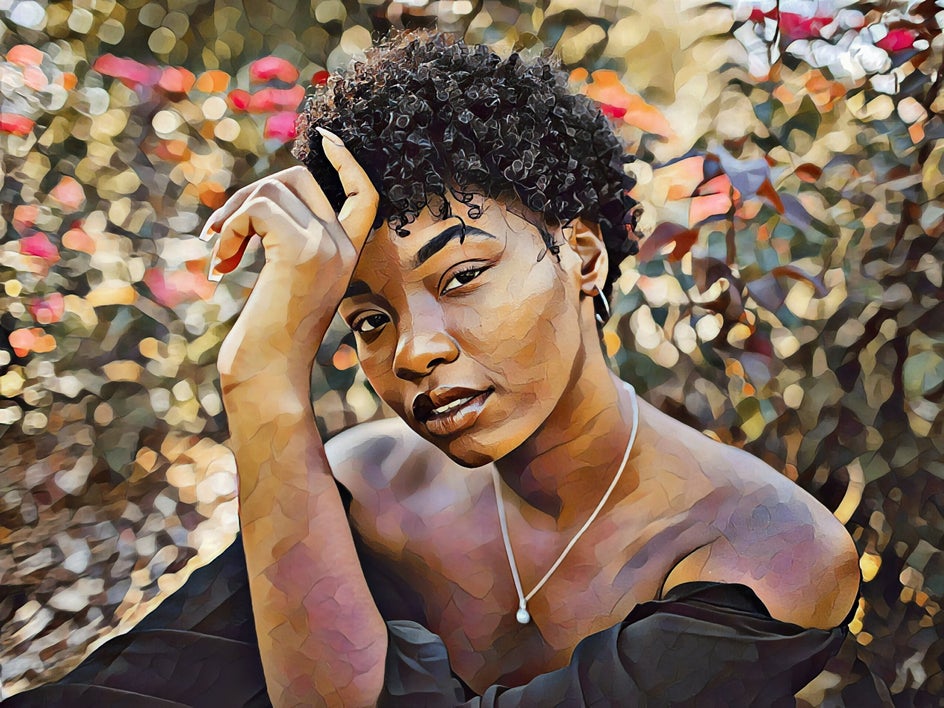Oil Paintings for Sale Featuring Celebrated International Painters
Oil Paintings for Sale Featuring Celebrated International Painters
Blog Article
Checking out All Regarding Oil Paints: An Overview to Recognizing Their Beauty and Worth
Oil paintings have actually astounded audiences for centuries, offering a look right into the creative mastery of numerous periods. Their rich background is linked with cutting-edge strategies and extensive emotional expression. Recognizing the materials and approaches behind these artworks can boost admiration. Furthermore, the market for oil paintings provides possibilities for capitalists and collectors alike. As one explores this interesting world, the concern emerges: what makes an oil painting absolutely beneficial?
The History of Oil Painting: A Journey With Time
Oil paint has roots that date back to ancient times, it absolutely thrived throughout the Renaissance, when artists uncovered its flexibility and abundant color possibility. Early examples can be traced to the 7th century, with strategies progressing especially throughout societies. The tool became popular in Northern Europe in the 15th century, specifically via the jobs of musicians like Jan van Eyck, who originated its usage for comprehensive realistic look and vibrant colors. This duration noted a departure from tempera paints, permitting better deepness and texture. As oil painting spread, it affected countless musicians, leading to masterpieces by prominent numbers such as Leonardo da Vinci and Rembrandt. The medium's legacy continues, forming the art globe well right into modern-day times.
Comprehending Oil Repaints: Products and Techniques
As artists discover the globe of oil paints, they encounter a diverse range of materials and methods that specify this tool. The key components of oil paint include pigments, which supply shade, and drying out oils, such as linseed, that bind the pigments and promote application. Numerous ingredients can modify the paint's texture and drying time, enhancing convenience. Strategies like glazing, where clear layers are constructed up, and impasto, which entails using thick paint, permit different visual impacts. In addition, using brushes, palette knives, and even fingers can develop unique textures and coatings. Recognizing these products and strategies makes it possible for musicians to completely express their creativity and achieve the wanted influence in their art work.
The Function of Color in Oil Paintings
Color plays a pivotal duty in oil paintings, influencing both aesthetic charm and emotional vibration. Comprehending color concept basics, consisting of the connections between tones, can improve an artist's ability to share mood and atmosphere. In addition, mastering shade blending strategies enables higher depth and richness in a paint's combination.

Shade Concept Basics
Understanding shade theory is necessary for artists collaborating with oil paints, as it develops the foundation for developing aesthetically appealing and unified structures. Color concept encompasses the research study of how shades engage, the color wheel, and the connections between main, secondary, and tertiary colors. Artists make use of complementary colors to boost contrasts and produce centerpieces, while comparable shades promote unity and cohesiveness within an item. Additionally, the ideas of cozy and great colors influence the understanding of depth and room in a painting. Understanding these concepts allows artists to adjust color properly, guiding the customer's eye and interacting their desired message. Mastery of color concept inevitably enriches an artist's capacity to convey emotions and ideas with their job.
Emotional Impact of Color
The psychological influence of color in oil paintings plays a crucial role in exactly how visitors attach and perceive with art work. Colors stimulate details sensations and state of minds, influencing the audience's emotional state. For example, cozy tones like reds and oranges can create a sense of warmth and energy, while great tones such as blues and environment-friendlies often evoke calmness or introspection. Artists tactically pick shade schemes to improve narrative aspects, leading the target market's emotional journey. The saturation and contrast of shades additionally enhance these effects, drawing interest and developing focus. Eventually, the interaction of shades in oil paintings not just boosts their aesthetic allure however also offers as a powerful medium for psychological expression, improving the visitor's experience and analysis.
Color Combining Techniques
While many facets of oil paint add to the overall make-up, grasping color blending strategies is crucial for attaining preferred results and depth. Shade mixing can be approached via different methods, consisting of the subtractive and additive procedures. Additive mixing entails integrating colors of light, while subtractive blending depends on pigments, where colors mix to produce brand-new tones. Artists usually use a restricted palette to produce harmonious jobs, recognizing the relationships in between main, secondary, and tertiary shades. Techniques such as glazing and scumbling additionally enhance deepness and luminosity. By masterfully blending colors, a musician can evoke feelings, create prime focus, and achieve oil paintings for sale a feeling of realism, eventually elevating the painting's visual and emotional impact.
Famous Oil Painters and Their Iconic Functions

Renowned for their proficiency of shade and strategy, oil painters have actually developed several of one of the most celebrated artworks in history. Popular artists like Vincent van Gogh captivated audiences with his emotive brushwork in "Starry Evening," while Claude Monet's "Impact, Sunrise" prepared for Impressionism. Leonardo da Vinci's "Mona Lisa" continues to be a long-lasting icon of imaginative wizard, showcasing his ability in catching human expression. At the same time, Rembrandt's "The Evening Watch" highlights his ingenious use light and shadow. Various other notable numbers include Pablo Picasso, who reinvented modern-day art with his vibrant trial and error in jobs like "Les Demoiselles d'Avignon," and Georgia O'Keeffe, whose vibrant representations of landscapes and flowers helped specify American innovation. Each musician's special style contributed significantly to the oil paint landscape.
Just how to Assess the Quality of an Oil Paint
Evaluating the high quality of an oil painting involves a cautious evaluation of craftsmanship methods, in addition to an analysis of shade and structure. Observing brushwork, layering, and the application of paint can disclose the musician's skill level. Additionally, the interplay of shades and the overall setup of components contribute considerably to the paint's aesthetic worth.
Analyzing Craftsmanship Strategies
A careful evaluation of workmanship methods is important for determining the top quality of an oil painting. Critics need to first check out the application of paint; thick, textured brushstrokes might suggest an experienced hand, while extremely uniform applications can suggest a lack of deepness. oil paintings for sale. The layering method is also essential; the existence of lusters and varied density can enhance brightness and complexity. Furthermore, the quality of the materials made use of, such as the canvas and pigments, plays a considerable duty in sturdiness and overall aesthetic. Focus to detail in aspects like sides and changes between shades mirrors the musician's commitment to their craft. Eventually, these techniques add to the paint's emotional influence and market worth, working as indications of the artist's ability and intent
Assessing Color and Structure
While reviewing the quality of an oil painting, one must focus on the interaction of shade and make-up, as these elements are essential to the artwork's overall effect. Color selections can evoke emotions and develop state of mind; as a result, the musician's scheme should be taken a look at for consistency and comparison. A healthy structure guides the customer's eye and develops a feeling of unity. Musicians frequently utilize strategies like the rule of thirds or leading lines to improve aesthetic passion. Additionally, using light and shadow can include deepness, boosting the three-dimensionality of the painting. Eventually, an effective oil paint weds shade and structure, involving the visitor and welcoming a deeper appreciation of the artist's vision and method.
Caring for and Preserving Oil Paintings
Appropriate treatment and conservation of oil paints is crucial for maintaining their stability and durability. To secure these art work, it is vital to display them away from direct sunshine, which can create fading and staining. Keeping a secure setting with regulated temperature level and humidity more aids in stopping damages. Cleansing must be done delicately using a soft, completely dry towel, avoiding any kind of extreme chemicals that might damage the paint or varnish. Routine inspections for indications of deterioration, such as flaking or fracturing, are advisable. When keeping or transferring oil paints, proper extra padding and framing are needed to avoid physical damage. Ultimately, thorough care contributes to the visual appeal and value of oil paints gradually.
The Market for Oil Paints: Gathering and Spending
Recognizing the market dynamics for oil paints is important for enthusiasts and investors alike. The worth of these artworks is influenced by different variables, including the artist's track record, historic relevance, and present fads. Collection agencies commonly look for items that reverberate personally while thinking about potential recognition in value. Auctions and galleries work as main locations for acquiring and marketing, with costs rising and fall based upon need and rarity. Purchasing oil paintings requires research into the marketplace, in addition to an understanding of credibility and provenance. In addition, arising artists may use opportunities for significant returns, while developed names can regulate high costs. Generally, a strategic method to collecting can yield both visual pleasure and financial rewards.

Often Asked Questions
What Are the Ecological Impacts of Oil Paint Materials?
The ecological impacts of oil paint materials consist of the launch of unpredictable natural substances (VOCs), dangerous waste generation, and resource removal for pigments. These factors add to pollution and eco-friendly deterioration, elevating issues amongst environmentally mindful musicians and consumers.
How Do Various Canvases Affect Oil Paint Results?
Various canvases influence oil paint results significantly. Absorbency, texture, and surface area high quality can alter paint application, drying times, and color vibrancy. Musicians typically pick specific canvases to attain preferred impacts and enhance their artistic expression.
Can Oil Paintings Be Recovered if Harmed?
If damaged, Oil paintings can undoubtedly be brought back. Professional conservators make use of different techniques to fix rips, clean surface areas, and address staining, making sure that the artwork preserves its initial beauty and worth for future generations.
What Are the Indications of an Original Oil Paint?
The indications of an initial oil paint include noticeable brush strokes, texture variants, and an unequal canvas weave (oil paintings for sale). Additionally, credibility may be verified through provenance, trademarks, and the presence of a varnish layer one-of-a-kind to oil mediums
How Has Modern Technology Influenced Modern Oil Painting Techniques?
Modern technology has considerably affected modern-day oil painting strategies by presenting digital tools for preparation, enhanced products for structure and longevity, and on-line systems for sharing and selling art, therefore increasing artists' innovative opportunities and target market get to. Oil painting has roots that date back to ancient times, it absolutely flourished during the Renaissance, when musicians discovered its versatility and abundant color possibility. The psychological effect of color in oil paints plays an important function in exactly how customers perceive and connect with art work. While several facets of oil paint contribute to the general composition, grasping shade blending methods is important for achieving preferred effects and deepness. Reviewing the top quality of an oil paint entails a cautious assessment of craftsmanship methods, as well as an analysis of shade and make-up. While evaluating the high quality of an oil painting, one should focus on the interaction of shade and structure, as these components are essential to the art work's overall impact.
Report this page